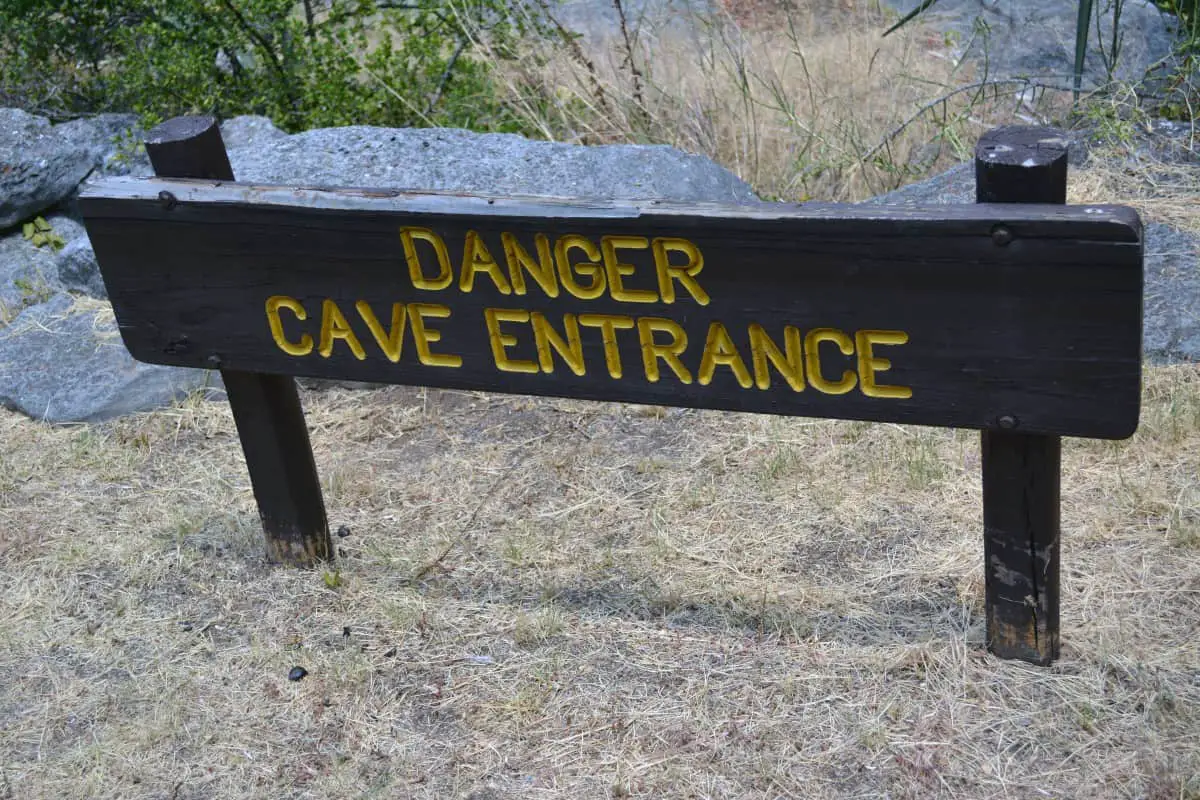You’ve been considered to be a serious speleologist for decades, and you’ve decided you’re ready to take on a new challenge. New depths, new waterfalls, new deep pools, new sheer faces. Just the thought gets your adrenaline pounding and your heart racing. You’re already packing your gear, getting ready for this next adventure.
The 7 most dangerous caves in the world. As you begin to plan your next excursion, here, in alphabetical order, are seven of the most dangerous caves for the extremely experienced caver:
- Chile’s Tyndall Glacier
- Mexico’s Naica Mine
- Norway’s Plura Cave
- Philippines’ Puerto Princesa Underground River
- Switzerland’s Gorner Glacier
- Uzbekistan’s Dark Star Cave
- Yucatan’s Cenotes
Expert cavers will tell you that any cave can be dangerous and needs to be explored with respect. Let’s learn more about what makes these caves particularly dangerous. Don’t worry; we’ll also get into some not-so-dangerous caves that are great for beginners. But first, onto the danger!
Seven of the Most Dangerous Caves Around the World
These caves are not for the casual spelunker or newly-initiated caver. These are serious excursions that require serious planning and should be undertaken by the prepared and trained speleologist. (More on the difference between these terms later!)
- Chile’s Tyndall Glacier
If you’re interested in the Patagonian Andes, Chile’s Tyndall Glacier may be for you. It is located in the Torres del Paine National Park, with a total area of 331 kilometers or about 205 miles.
What makes this experience among the most dangerous? The shaft is 100 meters deep. If there is a wild temperature swing that causes glacial melt, the shaft can fill in hours – not days – making escape dangerous, if not impossible.
- Mexico’s Naica Mine
If you’re ready for the unhealthiest sauna experience possible, this is the cave for you. Owned by ‘Penoles,’ a Mexican mining company, this cave’s typical conditions are 122 degrees Fahrenheit and 100% humidity. To survive this experience, you have to wear a cooling system and use breathing equipment.
This “Sistine Chapel of Crystals” is considered to be the largest crystal cave that has ever been discovered, but seeing it comes at a high physical price. To see the crystals that are said to measure over 49 feet and weigh 50 tons (about 100,000 pounds!), you have to go down about 1,000 feet into the mountain.
- Norway’s Plura Cave
This diving cave considered to be Northern Europe’s largest water-filled cave. It is estimated to go to about 1,300 feet deep. This type of diving is dangerous for several reasons:
- It requires decompression steps. It isn’t safe to go directly from the deepest part of the cave to the surface. There are places in the cave that have air available, allowing for a break in the assent.
- There are very sharp stones that can cut lines if the diver isn’t experienced enough to navigate them.
Two extremely experienced divers died in this dive in 2014.
- Philippines’ Puerto Princesa Underground River
This cave is actually closer to Sabang than to Puerto Princesa and visiting requires a permit issued at the Puerto Princesa City Coliseum. Once you arrive at the cave, you will don a hard-hat and enter the longest navigable underground river in the world via boat.
Guided tours have audio guides to ensure the tour is as quiet as possible. Why? Well… you don’t want to wake or disturb the bats, do you?
Bats aren’t the only inhabitants of the cave. Highly venomous snakes, centipedes, and tarantulas make their homes there too. When the sun dips down, the bats decide to leave the cave, and thousands of swifts fly in. Some have equated the sound of flapping wings to that of a speeding train!
- Switzerland’s Gorner Glacier
There are two related things that make this diving cave extremely dangerous:
- Any minimal fluctuation in temperature can result in the cave’s chambers collapsing and stranding anyone unfortunate enough to be inside at the time.
- The water temperature is only 32 degrees Fahrenheit. Even with a 7 mm dive suit, a diver can only stay in waters of that temperature for a couple of hours.
Water at that temperature is also going to require having surface ice broken in order to make progress.
- Uzbekistan’s Dark Star Cave
If the constant freezing wind in total darkness is your thing, well… this cave’s for you. This cave, also called “The Underground Everest,” requires a 3,280 descent. Without proper planning, outfitting, and supplies, the conditions in this cave can (and has) literally mummify any living thing.
11 miles of this cave have been mapped, and explorers have yet to find an end.
- Yucatan’s Cenotes
If the conditions listed in the above caves aren’t enough to give you pause, the sign of the grim reaper warning divers to not go beyond a certain point, or they could face death should get your attention.
This network of underwater caves is one of the deadliest diving spots in the world. These caves formed when sections of the land collapsed to create sinkholes filled with water. Before that happened, the ancient Mayans used to use this area for human sacrifice rituals.
Even experienced divers have become disoriented and have lost their lives in this series of caves because they ignored the warnings and strayed away from the marked paths. The caves also have hidden roots and vines growing in them, which have entangled divers. One such cave, Chac Mool Cenote, is said to be so dangerous that divers are lucky to return.
Many of these caves have guided tours that an individual can take, but when explorers venture beyond the tour boundaries, the more dangerous environment begins (with the exception of the Puerto Princesa Underground River tour – those living creatures are part of the group tour area too.)
Things to Note About Dangerous Caves
There are hordes of horror stories that involve caves. People who believed they were experienced enough, prepared enough and well-guided have entered caves and never returned. There’s more to consider than sudden drops or narrowing passages.
What Can Make a Cave Dangerous?
There are several environmental factors that can contribute to making a caving environment dangerous. Things to keep in mind can include:
- A crumbling interior
Caves are created when surfaces separate. That separation isn’t a one-time occurrence much as we would like to tell ourselves it is. Caves have been known to have roofs collapse or to have walls expand by shedding large boulders and dropping them onto unsuspecting explorers.
Are there usually signs that this is taking place? Sometimes, yes. You may be able to spot fresh breaks in the walls, paths, or ceiling, but there isn’t a guarantee.
- Sudden flooding
Depending on the cave, a minor change in temperature can result in significant ice-melt or surprise seasonal rains that can send a rush of water down into the cave flooding it making escape impossible.
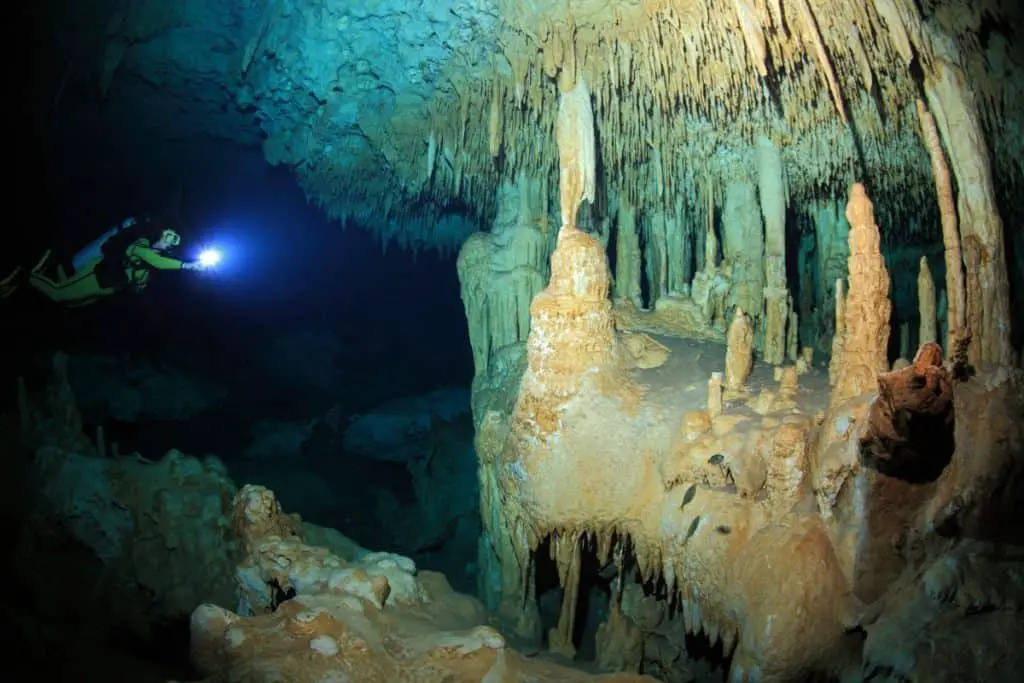
- Confusion
Have you ever walked through a maze? In the beginning, you may feel confident that you know exactly which turns you’ve taken, but after a handful of turns, it’s difficult to remember your exact path. Everything looks the same, and the way out is the reverse from the turns you took when you began.
- Fear
Even the most experienced expert will tell you that she experiences fear when she explores. Some even suggest that only a fool doesn’t acknowledge fear. Sure, the curiosity is strong, but the fear of making a misstep keeps a diver alive.
That said, there has to be balance. Unchecked fear can cause panic. If you’re using a breathing assist mechanism, and you begin breathing to fast because you’re panicked, you’ll end up breathing your carbon dioxide rather than the oxygen you need.
- Environment
There are caves on this list that are beyond freezing and are on the opposite end of the spectrum, incredibly hot and humid.
Some caves have enough moisture in them to grow slippery vegetation or vines that can tangle around a climber’s gear and render them helpless. There’s another cave on our list that is known for its poisonous inhabitants. Other caves don’t have breathable air.
The point is, you never know exactly what you’re going to encounter when you explore a new cave, so going in with a healthy dose of respect for the natural formations is in your best interest. So is making sure that you don’t explore by yourself and have done comprehensive research on your target.
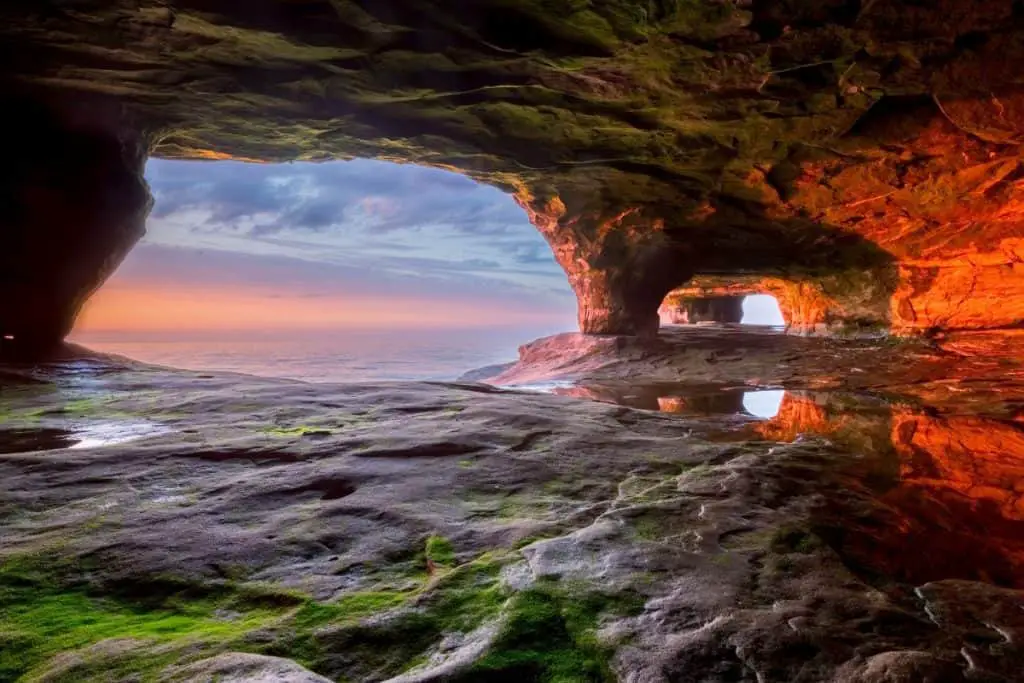
Three Levels of Caving Expertise
Maybe you’ve visited Carlsbad Caverns in New Mexico, listened to the guide’s warnings, experienced the thrill of the sights and sounds, and came out unscathed, so you feel you’re ready for something a little more challenging. Before you go there, let’s talk about three distinct levels of caving expertise.
- Spelunkers
These are the hobbyists of the caving world. This by no means implies that there aren’t dangers involved; these are the individuals that explore local caves in groups with more experienced individuals leading the group.
- Cavers
These are the individuals that have invested in formal training. They understand how to use ropes, are able to identify various levels of rock, and have specific rescue training.
- Speleologists
These are professionals who explore, study, and map caves for the purposes of research.
Extreme Environments, Unexpected Situations and…Outer Space?
Did you know that one way that our space program begins to train astronauts is to put them in some of these difficult cave situations? Why would they do that? What do caves have to do with space exploration?
Can you imagine getting into some very difficult situations where someone may get injured, or provisions are limited and running low, and you have the choice to either pull together and make things work or you can work against each other? Caving prepares for these things.
Team dynamics are incredibly important in the space program where extreme and unknown situations pop up in a foreign territory and environment.
Caving also helps them with real-life capturing of samples in a manner that doesn’t harm the environment or compromise the sample. They are then responsible for providing timely, accurate documentation of their findings.

Ways to Get Started in the Caving Fascination
Training as an astronaut is a bit more than you need to focus on, but if you’ve never explored a cave and think it sounds intriguing, perhaps you should get your feet wet (no pun intended) with a basic tour. Here are the top tourist cave explorations for novices and also some for those with more experience:
Top 10 Cave Tours for New Explorers (Alphabetized by State)
These caverns state that they have the longest stalactite formation. They have paved paths with guardrails to assist those who aren’t as sure on their feet – and to keep children from leaning too far over the precipices.
If the thought of experiencing bats in the Philippines sounded a bit intriguing, you just might be able to experience them in a much more user-friendly environment.
Since this is a state park, you have access to not only guided tours of the caverns but also to a manned discovery center and camping.
There are two different cave tours you can take here. The first is a gentle tour led by Forest Service Guides. It is an accessible trail, so strollers and wheelchairs are welcome. This tour will you “The World’s Largest Flowstone.”
The second tour requires advanced reservations and is more advanced. To participate in this tour, you must be in good physical condition and be prepared to get dirty as you crawl and squeeze through various trails.
The cave stays at a constant 58 degrees and has about 100% humidity (that’s the South for you.) High humidity and cool air can make the temperature seem cooler than it really is.
Once again, since this is in a National Forest, The Ozarks, to be exact, there are additional activities and camping available.
These caves are privately owned and have been prepared to meet safety standards.
There are three different levels of cave tours available:
- One that is targeted toward younger children
- Another for those who prefer a gentler experience, but want a bit more than the basics
- One that requires hardhats and promises you’ll be getting dirty crawling through crevices – some as narrow as 18 square inches.
All of the tours are guided.
If cave tours aren’t enough excitement for you, there’s also an amusement park you can visit.
Another member of the National Park Service, Mammoth Cave, boasts one of the longest known cave systems on earth (400+ miles!). The National Park Service provides maps and has several guided tours that are available.
The thing to be aware of is that there is a disease that is killing the local bat population. As a result, there are limitations as to what you can wear and/or take into the caves with you. Here are the information and guidelines you need to help protect the bats from White-Nose Syndrome (WNS).
The Lewis & Clark Caverns are members of the Montana State Park system and, as such, not only has access to additional activities and camping but requires all cave visits be conducted by trained guides.
There are three different levels of tours you can take.
- One is wheelchair accessible
- One is of moderate to difficult complexity that includes 600 stairs, ducking, bending, sliding, and even waddling. Yup, you’re probably going to be brushing up against the walls, so you should plan on getting some dirt on you.
- The third tour is considered to be challenging, and you can plan on crawling on your knees and wiggling through areas, lighted hard-hat, and all.
These caverns are considered to be one of the largest known limestone caverns in the Northwest. At an elevation of 5,300 feet above sea level (that’s 1.6 miles up), you need to make sure you are well hydrated and prepared for the thinner air.
Carlsbad was mentioned at the beginning of this article. These caverns have been highlighted in several documentaries, including snippets of film that were captured for Walt Disney’s “America the Beautiful” attraction.
You can take self-guided tours in some areas, or you can arrange for ranger-guided tours at different difficulty levels.
Here’s some information regarding specific footwear requirements to protect the bats from White Nose Syndrome and other dos and don’ts for visiting the caves.
Enter “The Marble Halls of Oregon” deep within the Siskiyou Mountain range. In these caves, you can experience a kids’ and family tour with park rangers available to answer questions, and historic candlelight cave tour, or if you’re feeling more adventurous, there’s the Discovery tour that has you twisting, stopping and discovering the caves with your guide.
Want a more involved experience? The Off-Trail caving tour will be just right for you. You must be physically fit and prepared to squeeze through tight spaces and crawl on your stomach. A dirty experience is promised during this guided tour.
Unlike the caves in Arkansas, these caverns are typically about 70 degrees Fahrenheit inside.
In addition to several different levels of cave exploration tours 180 feet below ground that range from basic discovery to adventure climbing, crawling, rappelling, and exploring, there are also outdoor zip rails and ropes courses, a 5,000 square foot maze, mining activities, and refreshment options.
In typical Virginia style, not only have Luray Caverns eliminated any steps for their visitors, but they also have put down pavers along the paths to make the experience completely accessible for all. As if that’s not enough, where else could you possibly experience “The Great Stalacpipe Organ?” Touted as the World’s Largest Musical Instrument by tapping into over three acres of the caverns.
Want a cave experience that requires you to squeeze through small spaces and get dirty? You can find that out here by scheduling the Wild Cave Tour. If that’s not your cup of tea, there’s also a general admission cave tour that’s suitable for all ages.
When you visit these caves in West Virginia, you’ll go 120 feet below the surface to observe incredible natural formations. If it’s hot outside, it’s cool inside as the caves stay at about 52 degrees Fahrenheit.
Once you’ve finished exploring, you can take your time going through the museum and gift shop.
Typical Gear Used for Caving
If you’re going to be leaning toward some of the more involved and participatory caving exploration exercises, there are always some basic items that are beneficial when you go into caves. I go over all of this in more detail in my beginner’s guide to caving article.
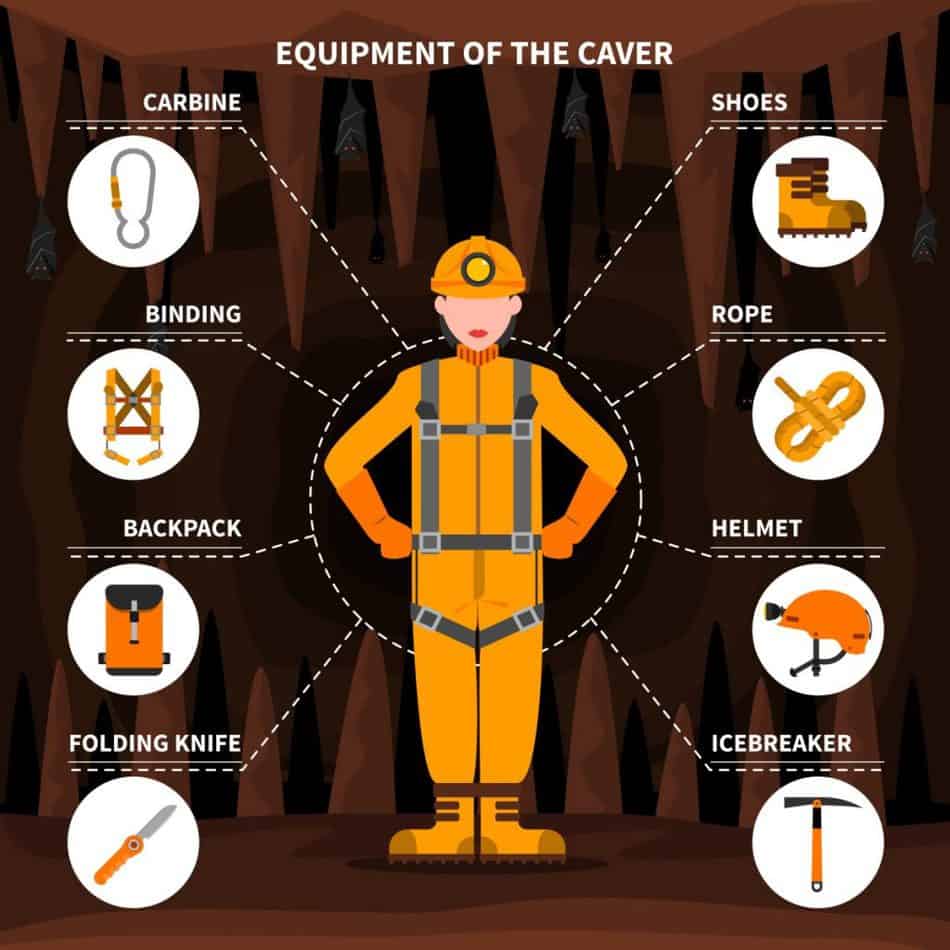
Sturdy Hiking Boots
Many of the caves’ sites we’ve discussed have suggested having good shoes. In fact, all of them have said that footwear such as flip flops is not allowed. Some examples of good boots for caving are (price points listed are as of the writing of this article):
- Dry Caving
- Men: Columbia Men’s Newton Ridge Plus II Waterproof Hiking Boot – See the latest price on Amazon
- Women: XPETI Women’s Thermator Mid High-Tip Waterproof Hiking Outdoor Boot – See the latest price on Amazon
- Wet Caving
- Men/Women: Muck Boot Adult MuckMaster Hi-Cut Boot – See the latest price on Amazon
Knee Pads
Most of the caves have knee pads that they supply. If you’re part of a group that is exploring caves, though, the DeWalt Heavy-duty Flooring Kneepads (available on Amazon) are the best for the money. I also just purchased the Knee Pads for Work by Thunderbolt for Construction, Flooring (available on Amazon) to try out. You can see my full list of knee pad recommendations here “Best Knee Pads for Caving: I’ve never crawled better“.
Helmet and Headlamp
Protecting your head is a must when it comes to caving. A good caving helmet isn’t very expensive but you want to make sure to get one that is designed for caving/rock climbing and that is also comfortable. Let’s face it, you can have the best helmet in the world but if it’s not comfortable you won’t want to wear it.
I personally use the Petzl Boreo, available on Amazon, the price is fair, and it’s very comfortable. Make sure to check out the article I wrote on caving helmets here “Caving Helmet Buyer’s Guide“.
Sturdy Gloves
There are tons of options available when it comes to gloves but at the end of the day, you just need a good pair that is meant for caving. The Intra-FIT Durable Climbing gloves (on Amazon) is a good option, it provides good dexterity while protecting your hands and wrists.
First Aid and Dry Bag
Every cave, regardless of experience, needs a first aid kit and at some point will want a decent dry bag for gear. This Roobuck First Aid Kit for Camping, Hiking, etc. (on Amazon) is a good all-around first aid kit. Its compact, lightweight, and reasonably priced. The Earth Pak Waterproof Dry Bag (on Amazon) will keep your provisions safe and accessible without breaking the bank.
Safety First
When you’re planning on going caving, there are some basic safety practices that everyone needs to observe. Everyone – no matter how experienced you feel you are.
- NEVER go alone.
Always go with at least one other person. The recommended number of people for a caving expedition is at least four and let someone who isn’t going on your adventure know where you’re going to be and when you plan to be out of the ground. The better you plan for the worst-case scenario, the less likely you are to need it.
- Know your limitations.
There are times when we want to believe we are invincible – however, caving should not be one of those times. Remember, experts say that fear is an important part of the curiosity/fear balance. Know what you can safely do. This is the time when the lowest level of skill determines what happens next.
- Make sure you have adequate gear and supplies.
Caves can get cold. Make sure you have warm clothing available. Also, plan for delays and take provisions in case you need them. This would mean plenty of food, water, and your first aid kit.
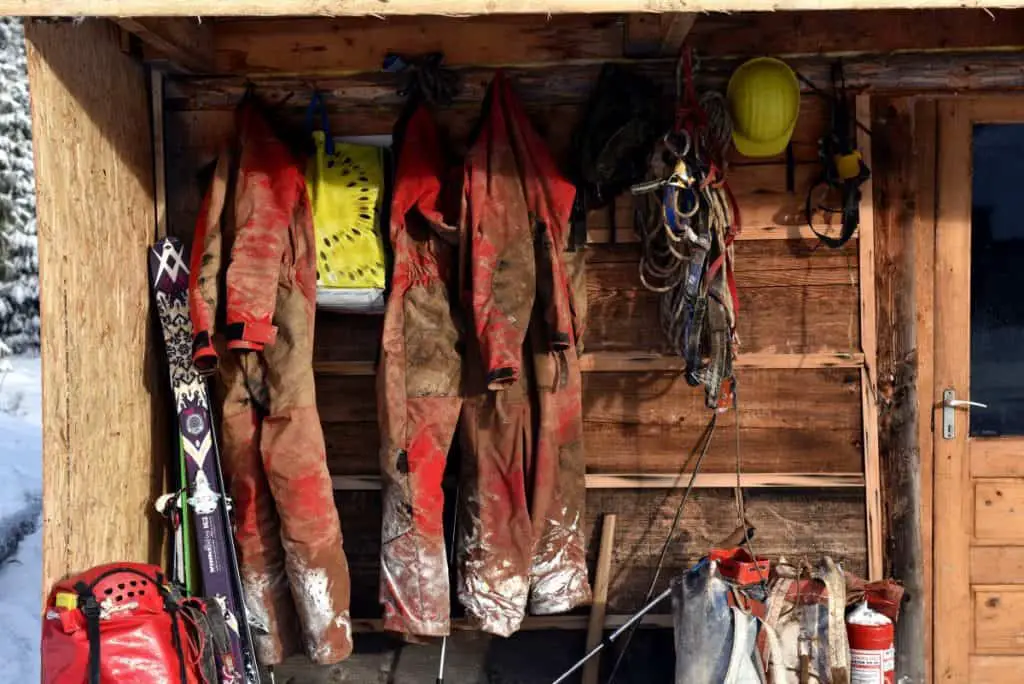
- Maintain three points of contact.
Always have at least three parts of your body supported on sturdy/immovable objects. Maybe your foot is on something solid, your hand is on something else, and your other shoulder is against a wall. Perhaps it’s your knee, hand, and hip. Regardless, this keeps you balanced, particularly when you are on uneven ground.
- Have an emergency plan.
There should always be an experienced exploration leader who is the go-to in all situations. Before going on your excursion, discuss several scenarios, what happens in each, and who is responsible for which steps. Also, make sure you discuss what happens in the event that the leader is injured.
- Leave everything better than you found it.
The caver’s motto is: “Take nothing but pictures, leave nothing but footprints, kill nothing but time.” Make sure that you don’t leave any trash behind and don’t take anything from the caves that isn’t for specific archeological or scientific research.
Explore Away!
If, after reading this article, you’re dying to get your Indiana Jones hat and begin exploring caves, it might be a good idea to find a local group of experienced caving explorers and join their ranks.
To find this kind of group, you can check with your local Chamber of Commerce, do a quick internet search, or check with your local outdoor retailer to see if they’re familiar with anyone.
If you’re just getting into this adventurous activity, it’s a good idea to start with some of the guided tours in the national parks before going off with a new group.
When you’re ready to get started caving, be sure to read my Beginners Guide and check out my recommended gear section.

